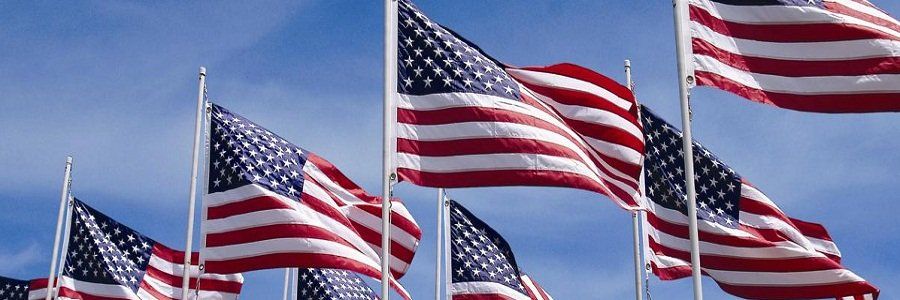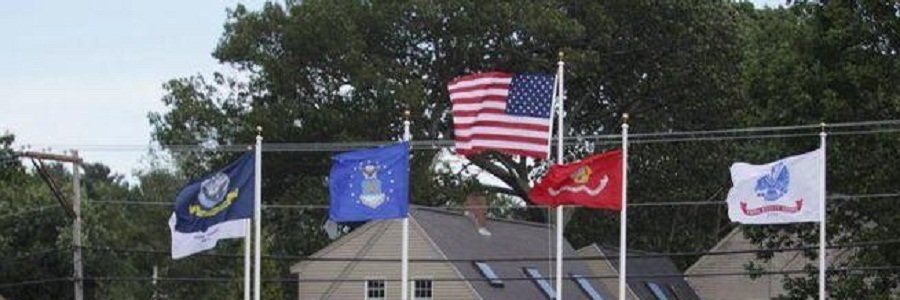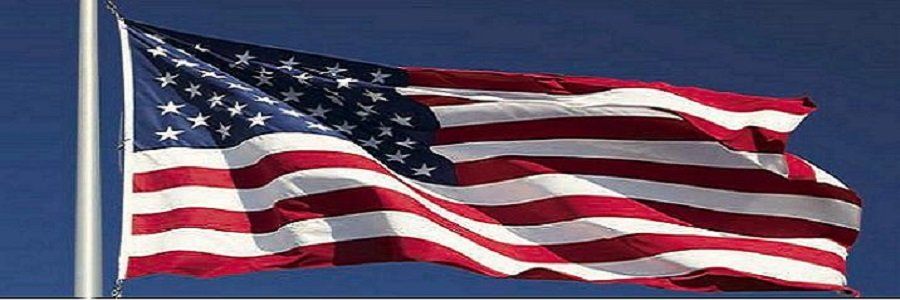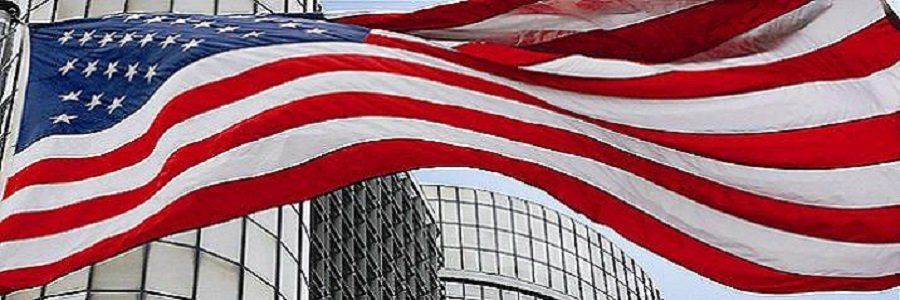Historical Flags
Historical State of Maine Flag Now Available! Please call for sizes and pricing.
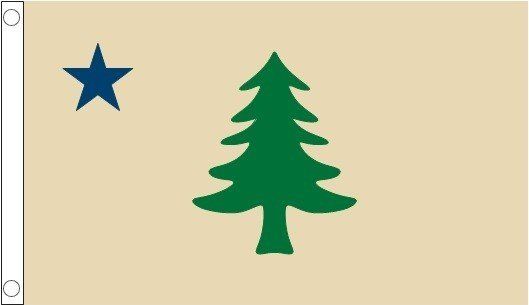
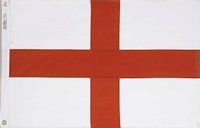
St. George Cross Flag (1497)
While Columbus was in Spain seeking backing for an expedition the Cabots were in England on a like mission. They had little success, but when the news of Columbus’ discovery reached King Henry VII his interest quickened and he gave ear to them.
| Type |
| 2x3 Nylon $44 |
| 3x5 Nylon $60 |
More than a year was consumed in fitting out the expedition and recruiting and training the ship’s crew. Cabot sailed under the Royal Standard of England, the Red Cross of St. George on a white field, an emblem that was brought home in the year 1275 by King Edward I when, as Prince of Wales, he went on one of the crusades to the Holy Land.
On June 24, 1497, John Cabot planted this flag on the shores of Labrador. Except for the Viking flag, it was the first flown over the mainland of America. The expedition worked down the coast and went back to England. On subsequent voyages the Cabots explored as far south as Florida but effected no settlements.
Under this flag the Constant brought the settlers to Jamestown in 1607. It was one of the flags flown on the Mayflower which brought the Pilgrim Fathers to Plymouth in 1620.
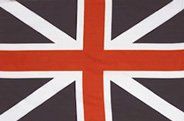
King's Colors Flag (1606)
For centuries the flag of England was the red cross of St. George on a white field. Likewise, for centuries the flag of Scotland was the white cross of St. Andrew on a blue field. In 1603, England and Scotland, after many years of warfare, united under King James I, and it became necessary to devise a flag which would typify that union.
| Type |
| 2x3 Nylon $44 |
| 3x5 Nylon $60 |
This was done in 1606 by blending the two crosses together. The Scottish flag was retained as the background for the new banner and the cross of St. George superimposed on it. To retain a semblance of the white field of the English flag, the red cross of St. George was mounted on a strip of white which extends out and beyond the borders of the cross, and this makes it prominent and distinct.
The new flag was variously called the King’s Colors or the Grand Union Flag. It is the banner under which the English colonization of America was effected, and remained the flag of the colonists for more than 100 years.
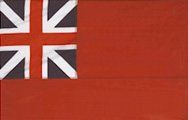
The British Red Ensign (1707)
The British Red Ensign, sometimes called the “Meteor Flag of Old England” was established by Queen Anne in 1707 as the National emblem of Great Britain. It has a red field with the King’s Colors or the Grand Union Flag in the dexter corner as a canton.
| Type |
| 2x3 Nylon $44 |
| 3x5 Nylon $60 |
This was the flag of the British during the French and Indian war of 1754-1759 which was fought to decide whether the British or the French should control the continent of America. This momentous question was decided by the Battle of Quebec when Wolfe’s infantry scaled the rocky heights to the Plains of Abraham and defeated Montcalm. By the treaty of 1763 Great Britain gained control over all of that vast territory of the new world east of the Mississippi River. France ceded that to the west to Spain. The British Red Ensign was the banner of the British troops who opposed Washington’s continentals all through the harrowing days of the American Revolution, and it was under its folds that Cornwallis surrendered at Yorktown on that historic October 19, 1781. It was the British Flag of the French and Indian War.
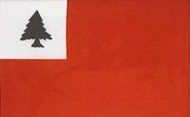
The Continental Flag (1775)
With the appearance of the Continental Flag British emblems were entirely eliminated from the Colonial Banner for the first time. In its original form it has a red field and a plain white canton. At the time there was no distinctive symbol available.
| Type |
| 2x3 Nylon $44 |
| 3x5 Nylon $60 |
A pine tree on a white ground was symbolic of many qualities conspicuous in the lives of our New England ancestors. Simple, austere, and bearing withal a stately dignity, it fittingly expressed the ideas and trends of the times. It proclaimed the patriot’s love for his homeland with its pine-clad hills. And so it was that the pine tree emblem came into general use and one was placed in the canton of the Continental Banner. It thus became one of the series of the Pine Tree Flags. It is claimed that the Continental Flag with a red field and the pine tree on the white canton, was one of the banners carried by the American troops, who, on that memorable day of June 17, 1775, fought it out with British Regulars on the grassy slopes of Bunker Hill and three times stopped the British charge.
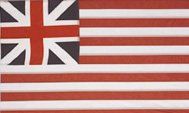
The Grand Union Flag (1775)
As the colonial forces took on a national aspect it became necessary to provide a national flag for them. Out of this situation came the Grand Union or Cambridge Flag with its field of thirteen alternate red and white stripes, which symbolized the union of the 13 colonies, and the King’s Colors in canton.
| Type |
| 2x3 Nylon $44 |
| 3x5 Nylon $60 |
While the banner was only half America, it expressed the thought of the times and the political situation in the colonies, which at that time still acknowledged their allegiance to Great Britain. The colonists wanted only justice and their rights as Englishmen. They were united in their determination to secure them and to fight for them if necessary. The Grand Union Flag was raised at Cambridge, January 2, 1776, by General Washington, and given a salute of 13 guns. The occasion marked the beginning of our National existence. It continued to be the flag of the Revolution until the adoption of the Stars and Stripes by an Act of the Continental Congress, June 14, 1777, the birthday of the American Flag.
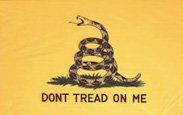
The Gadsden Flag (1776)
The rattlesnake flags were the product of the southern colonies. One of the first of these was the Gadsden Flag, devised by Colonel Christopher Gadsden, a patriot of South Carolina, and presented to Congress with the expressed desire that it be designated as the flag of the Commander of the American Navy.
| Type |
| 2x3 Nylon $44 |
| 3x5 Nylon $60 |
Congress thanked him for the idea and discussed Benjamin Franklin’s analysis of the Rattlesnake, but declined to incorporate it into law. It is claimed that the Gadsden Flag was flown on the “Alfred” as the personal banner of commander Esek Hopkins, Commander of the American Navy. It was run up by John Paul Jones. The words “Don’t Tread on Me” were evolved from an incident of the times. Lord North had declared that he would never relax his coercive measures until he had brought America to his feet. The sentence is an answer to his Highness and a warning as well. It said, that should he accomplish his purpose, it would be as dangerous to tread on America as it would be to tread on her symbol – the American rattler.
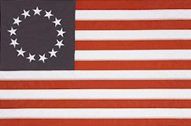
The Betsy Ross Flag (1777)
Resolved that the flag of the thirteen states to be thirteen stripes alternate red and white, that the union be thirteen stars, white on a blue field, representing a new constellation. With these simple words Congress created the American Flag on June 14, 1777.
| Type |
| 2x3 Nylon $44 |
| 3x5 Nylon $60 |
| 4x6 Nylon $72 |
| 5x8 Nylon $120 |
| 2x3 Cotton $45 |
| 3x5 Cotton $62 |
| 4x6 Cotton $75 |
The stripes came from the field of the Grand Union Flag and were presumably taken from the Washington coat of arms. It is probable that the stars were also taken from that emblem, and changed to white for color harmony. It is generally conceded that General Washington had a hand in designing this flag and it is fair to assume that the idea of the stars originated with him. The first Stars and Stripes displayed in the face of an armed enemy was at Fort Stanwix, August 3, 1777. The Flag was improvised. The white stripes and stars came from the soldier’s shirts; a captain’s cloak supplied the blue of the union; and the red stripes came from the flannel petticoats of the women of the garrison, who gladly donated them for the purpose.
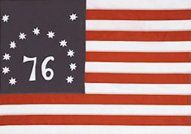
The Bennington Flag (1777)
Burgoyne, the British General operating in northern New York, in the Revolutionary War, heard that the Americans had collected some military supplies at Bennington, Vermont. He sent an expedition of 1,000 men to capture them. Colonel John Stark, a hero of Bunker Hill, with 2,000 Americans set out to oppose the British.
| Type |
| 2x3 Nylon $44 |
| 3x5 Nylon $60 |
| 4x6 Nylon $89 |
| 5x8 Nylon $123 |
| 2x3 Cotton $46 |
| 3x5 Cotton $62 |
| 4x6 Cotton $90 |
They fought under the Bennington Flag. When Stark saw the British advancing down the road he pointed them out to his brave troops and said: “Boys, there they are. We beat them today, or Molly Stark’s a widow.” The Green Mountain Boys, fighting Indian fashion, practically annihilated the British Regulars. Only about 100 of them ever got back to Burgoyne’s Army. It was the loss of these 900 men that contributed much to the failure of Burgoyne’s campaign, which ended in disaster with the surrender of his Army at Saratoga, New York, October 7, 1777, a death blow to the British. The Bennington Flag was presented to Colonel Stark’s Army by Nathaniel Fillmore, the father of the future President. It was made of homespun linen and hand sewed. The Bennington flag is the only one of the "Flags of our Country" that was never an official American Flag.
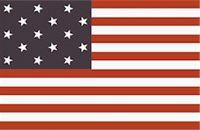
The Star Spangled Banner (1795)
When Vermont and Kentucky were admitted to the Union, Congress added a stripe and a star to the flag for each of them. This flag of 15 stars and 15 stripes waved over Fort McHenry when the British Navy attacked on the night of September 13, 1814. Francis Scott Key was a hostage on the British Frigate “Surprise”.
| Type |
| 2x3 Nylon $44 |
| 3x5 Nylon $60 |
| 3x5 Cotton $84 |
All night through he watched the gallant defense of Fort McHenry. In the first pale streaks of dawn he saw that the flag still proudly waved over the ramparts and was inspired to write the words of our National Anthem, “The Star Spangled Banner.”
It was this banner under which the American Navy waged a war against the Barbary Pirates and which they hoisted over the fort at Derne, Tripoli, on April 27, 1805, following an assault on that place by American Marines and Bluejackets. It was the flag under which Commodore Perry won the battle of Lake Erie, and General Andrew Jackson the signal victory over the British Regulars under Sir Edward Pakenham at New Orleans.

The Old Glory (1960)
This is the current flag of the United States. This Flag became the Official United States Flag on July 4, 1960. A star was added for the admission of Hawaii on August 21, 1959.
| Type |
| 2x3 Nylon $29 |
| 3x5 Nylon $35 |
| 3x5 Cotton $60 |
Executive Order of President Eisenhower dated August 21, 1959 - provided for the arrangement of the stars in nine rows of stars staggered horizontally and eleven rows of stars staggered vertically.

